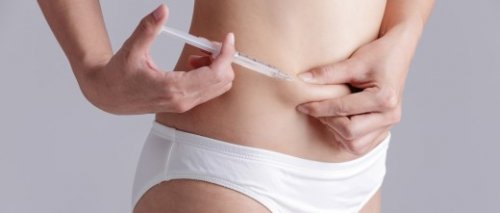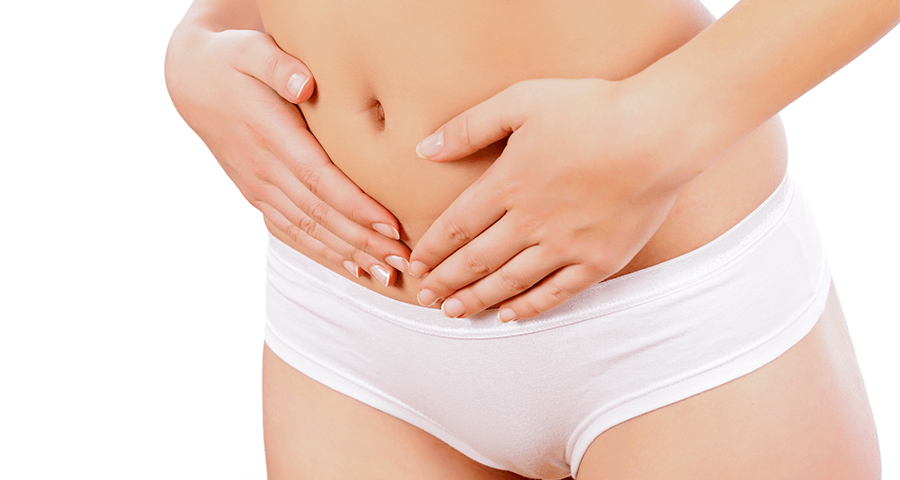What Is Ovarian Hyperstimulation Syndrome?

During a menstrual cycle, a woman usually produces an egg; this happens once a month. However, some women who have trouble getting pregnant turn to treatments that stimulate egg release. These treatments are given in order for them to produce more eggs in a cycle, and in doing so have more chances to get pregnant.
Sometimes these techniques can overstimulate the ovaries, which can disturb the blood vessels. This condition is known as ovarian hyperstimulation syndrome; it is found in some women who take fertility medication.
Ovarian hyperstimulation syndrome is a complication that consists of an abnormal increased response to stimulation. This can be categorized as mild, moderate and severe. The most difficult cases are rare but can result in thrombosis and even death.
Symptoms of Ovarian Hyperstimulation Syndrome
When ovarian hyperstimulation syndrome develops, the symptoms can vary depending on the severity of the case. We will list some signs that help to identify the condition according to the stage at which it is found.

Mild Cases
- Abdominal pain
- Bloating
- Weight Gain
Moderate Cases
- Decreased urination
- Swelling and intense abdominal pain
- Difficulty breathing
Severe Cases
- Severe pain from ovarian torsion
- Miscarriage
- Persistent luteum cysts
- Anemia
- Ascites
- Nausea
- Liver dysfunction
- Pleural effusion
Factors That Worsen Ovarian Hyperstimulation Syndrome
There are many things that can aggravate this syndrome. The risk of having it may be increased depending on the characteristics of each woman. We will point out a few that can help us to be aware when considering this treatment.
- Low body weight. Women with a smaller body mass have an increased incidence of ovarian hyperstimulation syndrome.
- Age. It is common in women younger than 30-35, probably due to a higher concentration of hCG receptors. It also happens because at this age the ovaries have more follicles. This causes an increased response to the ovarian stimulation treatment.
- Elevated estrogen. If there is a very high level of estrogen in your blood during the ovarian stimulation treatment, it can be very risky. It is especially concerning when it raises to the level of 75% or more than expected in a period of 24 hours.
- Polycystic ovaries. This is another symptom where a large amount of cysts are found in the ovaries. With ovarian stimulation treatment it is possible to have a very exaggerated response.

Treating Ovarian Hyperstimulation
Most mild cases of this syndrome do not require treatment, and can even increase the likelihood of getting pregnant. Still, it is recommended to treat the unpleasant symptoms, especially in the more serious cases, when you should avoid complications.
The following measures are treatment options for ovarian hyperstimulation syndrome.
- If the patient becomes pregnant they should be under close medical supervision. The symptoms could worsen or take weeks to subside, otherwise you run the risk of them becoming more serious.
- Get enough rest, and keep your legs elevated; this will help your body to drain fluids. You can engage in light activity occasionally, but avoid intense exercise.
- Limit sexual intercourse, this activity can affect the ovaries. Sexual activity can cause rupture or torsion of the cysts.
- Drink lots of fluid, at least 10 to 12 glasses of water daily. These can also include rehydrating drinks.
- Avoid alcohol, coffee, and any other caffeinated drinks.
- Pain medicine can be taken for pain. Acetaminophen is especially recommended.
- Ensure that the patient is not gaining weight. Weight gain of more than one kilo per day could result in a serious situation.
- Maintain communication with your doctor, in order to ensure the appropriate treatment.
All cited sources were thoroughly reviewed by our team to ensure their quality, reliability, currency, and validity. The bibliography of this article was considered reliable and of academic or scientific accuracy.
- Sociedad Española de Ginecología y Obstetricia. Prevención y manejo del síndrome de hiperestimulación ovárica (2017). Prog Obstet Ginecol 2018;61(4):410-416.
- Saavedra, J. Síndrome de hiperestimulación ovárica: clasificación, fisiopatología y manejo. Revisión del tema. Revista colombiana de obstetricia y ginecología. 2002. 53: (3), 1-16.